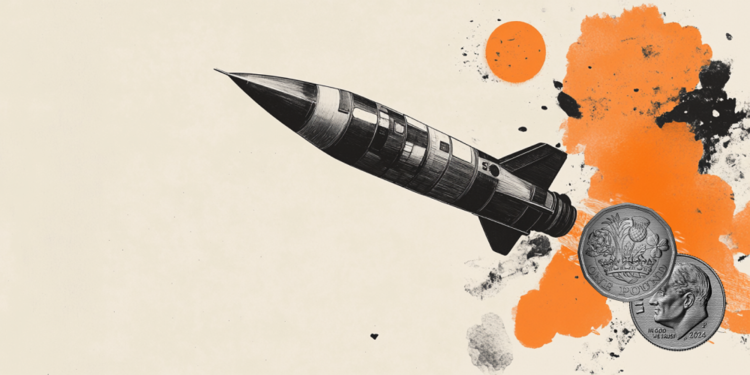- GBP/USD holds gains near the 39-month high of 1.3593.
- The US Dollar struggles as risk appetite increases amid easing US-EU trade tensions.
- The Pound Sterling advances as the odds of deep rate cuts by the BoE diminish.
GBP/USD extends its winning streak for the third successive session, trading around 1.3570 during the Asian hours on Tuesday. The pair is hovering near the 39-month high of 1.3593, which was marked on Monday. The pair continues to appreciate as the US Dollar (USD) weakens due to growing fears over the United States’ (US) debt concerns.
The Greenback faces challenges as the easing trade tension between the United States (US) and the European Union (EU) improves the traders’ risk appetite. US President Donald Trump extended the tariff deadline on the European Union (EU) from June 1 to July 9 after having a phone call with European Commission President Ursula von der Leyen on Sunday. On Friday, Trump threatened to impose a 50% tariff on imports from the European Union (EU).
Additionally, the US Dollar attracts sellers as the United States (US) faces concerns over fiscal deficit ahead of Trump’s “One Big Beautiful Bill” going through the Senate floor. The Bill is expected to increase the deficit by $3.8 billion, as it would deliver tax breaks on tip income and US-manufactured car loans, according to the Congressional Budget Office (CBO).
Trump’s Bill includes provisions like tax cuts, spending increases, along raising the debt ceiling. This could worsen the US government’s finances and increase the risk of bond yields staying higher for longer. Higher bond yields can keep borrowing costs higher for consumers, businesses, and governments.
Moreover, the Pound Sterling (GBP) rises as traders reassess the Bank of England’s (BoE) monetary policy outlook after the release of the hotter-than-expected inflation and retail sales data for April, released last week. Reuters reported that the futures market indicates UK rates to fall by around 38 basis points (bps) in 2025, which would suggest one 25 bps interest rate cut and a roughly 50/50 chance of a second cut.
Pound Sterling FAQs
The Pound Sterling (GBP) is the oldest currency in the world (886 AD) and the official currency of the United Kingdom. It is the fourth most traded unit for foreign exchange (FX) in the world, accounting for 12% of all transactions, averaging $630 billion a day, according to 2022 data.
Its key trading pairs are GBP/USD, also known as ‘Cable’, which accounts for 11% of FX, GBP/JPY, or the ‘Dragon’ as it is known by traders (3%), and EUR/GBP (2%). The Pound Sterling is issued by the Bank of England (BoE).
The single most important factor influencing the value of the Pound Sterling is monetary policy decided by the Bank of England. The BoE bases its decisions on whether it has achieved its primary goal of “price stability” – a steady inflation rate of around 2%. Its primary tool for achieving this is the adjustment of interest rates.
When inflation is too high, the BoE will try to rein it in by raising interest rates, making it more expensive for people and businesses to access credit. This is generally positive for GBP, as higher interest rates make the UK a more attractive place for global investors to park their money.
When inflation falls too low it is a sign economic growth is slowing. In this scenario, the BoE will consider lowering interest rates to cheapen credit so businesses will borrow more to invest in growth-generating projects.
Data releases gauge the health of the economy and can impact the value of the Pound Sterling. Indicators such as GDP, Manufacturing and Services PMIs, and employment can all influence the direction of the GBP.
A strong economy is good for Sterling. Not only does it attract more foreign investment but it may encourage the BoE to put up interest rates, which will directly strengthen GBP. Otherwise, if economic data is weak, the Pound Sterling is likely to fall.
Another significant data release for the Pound Sterling is the Trade Balance. This indicator measures the difference between what a country earns from its exports and what it spends on imports over a given period.
If a country produces highly sought-after exports, its currency will benefit purely from the extra demand created from foreign buyers seeking to purchase these goods. Therefore, a positive net Trade Balance strengthens a currency and vice versa for a negative balance.

